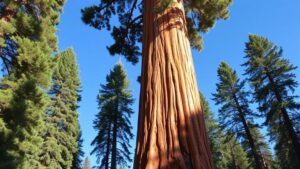Documenting explorers’ journals from the 19th century to verify their accounts of ruins they never mapped.
Documenting Explorers’ Journals from the 19th Century to Verify Their Accounts of Ruins They Never Mapped
Introduction
The 19th century was a period marked by fervent exploration, where adventurers, scientists, and scholars ventured into uncharted territories. The significance of explorers’ journals from this era cannot be overstated, as they provide a glimpse into the lives, discoveries, and encounters of those who navigated the globe. These journals often describe ruins and natural wonders that were never thoroughly mapped, leaving scholars and archaeologists today to verify their accounts.
Key figures such as John Lloyd Stephens, who explored the ruins of the Maya civilization in the 1830s, and Richard F. Burton, who ventured into Africa and Asia, enriched our understanding of ancient cultures. Their writings have paved the way for modern archaeological techniques aimed at uncovering lost histories. The impact on exploration is profound, as these accounts continue to inspire a deeper interest in the mysteries of the past.
Geographical and Environmental Context
The geographical settings described in explorers journals often include diverse terrains, from dense jungles to arid deserts. For example, Stephens documented his exploration in present-day Guatemala and Honduras, where he encountered towering pyramids and intricate carvings, largely hidden by dense foliage.
Climate plays a crucial role in exploration. Many explorers had to adjust their schedules to accommodate the rainy seasons or extreme temperatures. In the case of Richards’s expeditions in Africa, he faced harsh drying winds and monsoon rains that tested both his resolve and his findings.
Natural landmarks, such as the Andes mountain range described by explorers in South America, serve not only as navigation aids but also as vital clues to the cultural significance of ruins. Notably, the vast geological formations often contain remnants of historical civilizations.
Methods and Techniques
Traditional exploration methods relied heavily on mapping from primary observations, sketching, and note-taking. Explorers would often create detailed descriptions of their findings, which were vital for compiling a comprehensive understanding of the landscape and its history.
Today, modern technology has revolutionized these approaches. Techniques such as aerial photography, satellite imagery, and ground-penetrating radar allow for unprecedented levels of detail and accuracy in locating and analyzing ruins. For example, LiDAR (Light Detection and Ranging) has been instrumental in revealing hidden structures beneath thick jungle canopies, confirming accounts from explorers like Stephens.
Safety considerations are paramount during explorations. Researching local terrain, securing permits, and understanding environmental hazards are critical steps for modern explorers venturing into previously undocumented sites.
Notable Discoveries and Findings
- Machu Picchu: Discovered by Hiram Bingham in 1911, with prior awareness from earlier accounts regarding its existence.
- Tikal: The significance of which was highlighted by Stephenss detailed observations and later confirmed through archaeological digs.
- Petra: While already known, Richard Burtons accounts initiated greater interest that led to systematic archaeological studies.
Each of these findings not only sheds light on the culture and history of their respective civilizations but also contributes extensively to our understanding of architectural achievements and socio-political structures.
Cultural Impact
Local perspectives on ruins often differ from the narratives presented in explorers’ journals. Indigenous knowledge and oral histories offer invaluable insights that complement Western scientific approaches. For example, local communities have historically preserved stories of sites that explorers initially dismissed or overlooked.
Historically, the interactions between explorers and local populations had profound consequences, ranging from the preservation of cultural artifacts to the misrepresentation of local traditions in the name of discovery. The relevance of these historical encounters continues to echo today as we strive for a more respectful relationship between archaeology and local cultures.
Modern Access and Exploration
Currently, many of the ruins documented in 19th-century explorers journals have become significant tourist destinations, though access can vary. Sites such as Angkor Wat in Cambodia and the pyramids of Teotihuacan draw thousands of visitors annually.
Regulations surrounding permits aim to protect both the sites and the experience of visiting them. For example, new regulations at Machu Picchu require travelers to engage with licensed guides, ensuring that visitors receive accurate information while minimizing environmental impact.
Best practices for visitors include respecting the site, following guidelines set by local authorities, and engaging with local communities to foster a culture of mutual respect and understanding.
Conclusion
Documenting the experiences of 19th-century explorers through their journals offers invaluable perspectives on historical ruins that have shaped our understanding of human civilization. As we utilize modern methods to verify their accounts, we not only uncover hidden histories but also ensure that future exploration respects and enhances cultural heritage. Integrating these insights into contemporary exploration practices fosters a richer dialogue about the complex narratives that these ruins embody.



